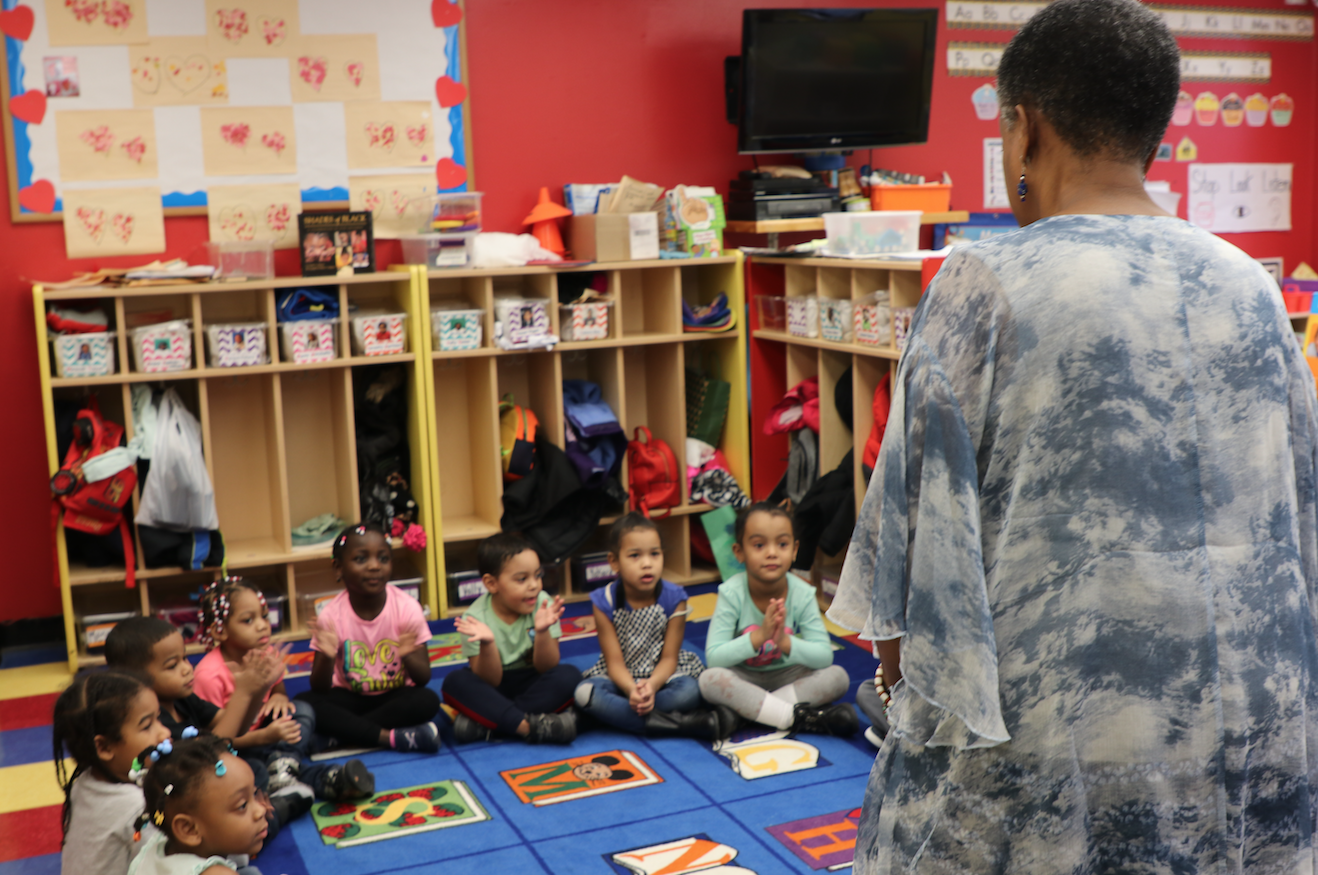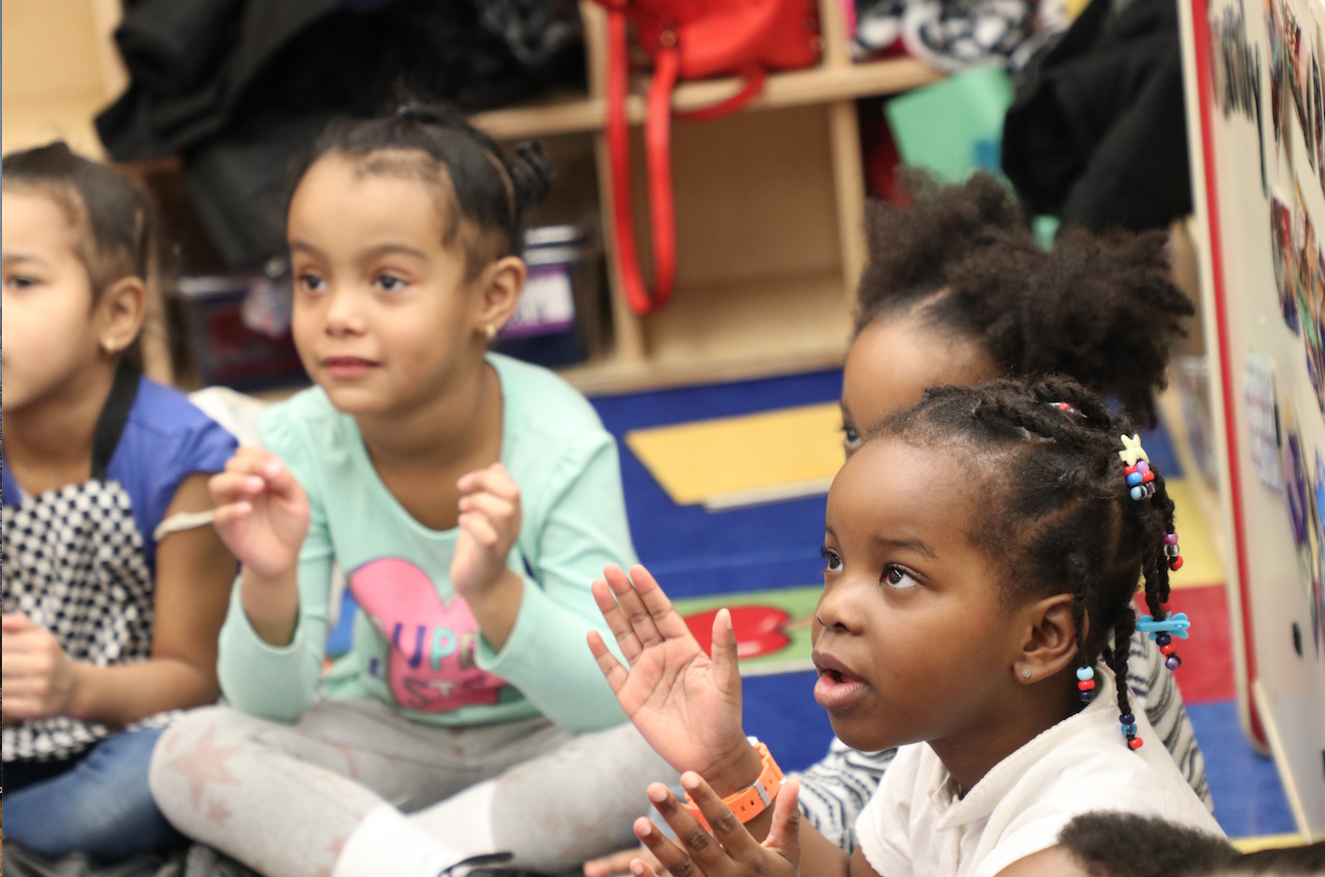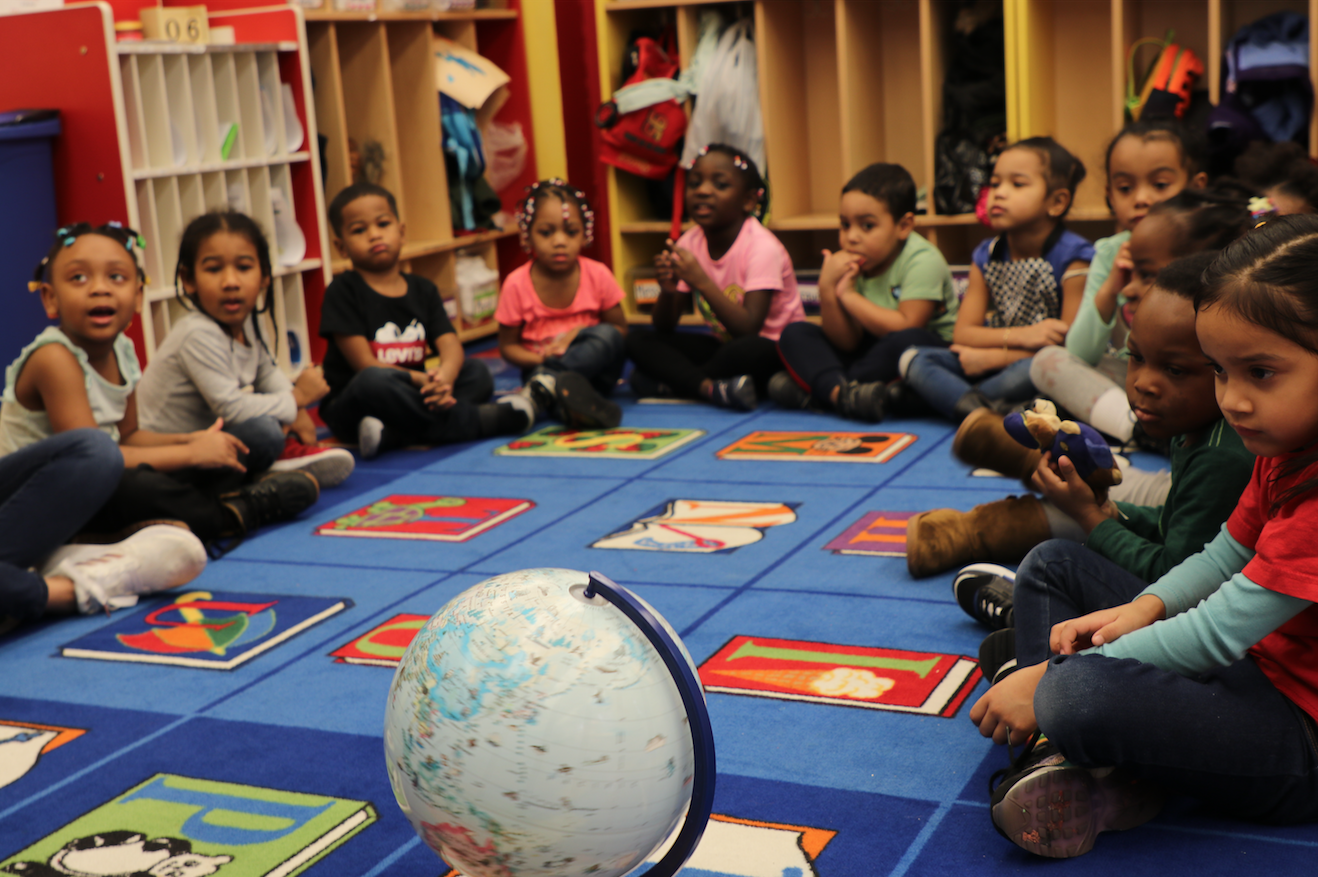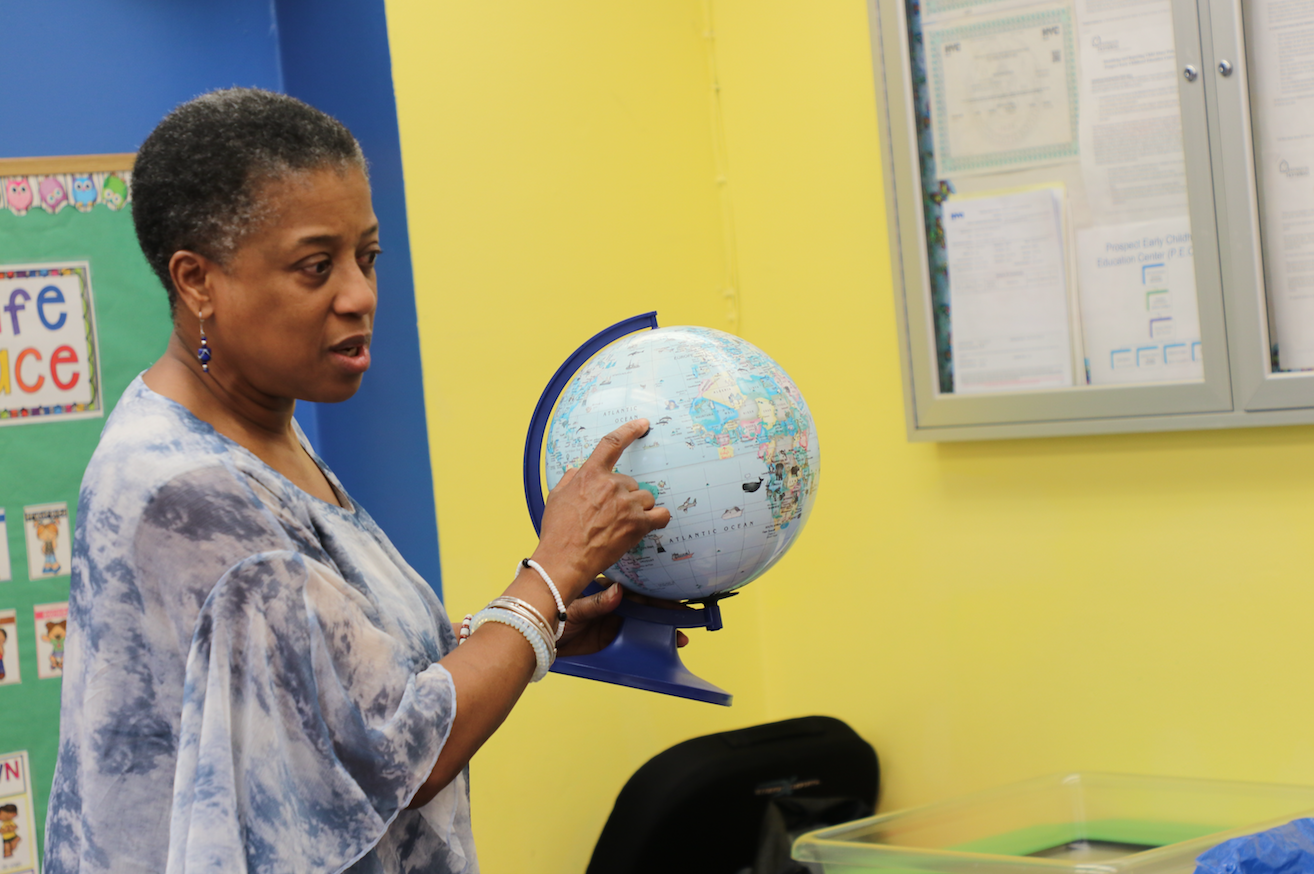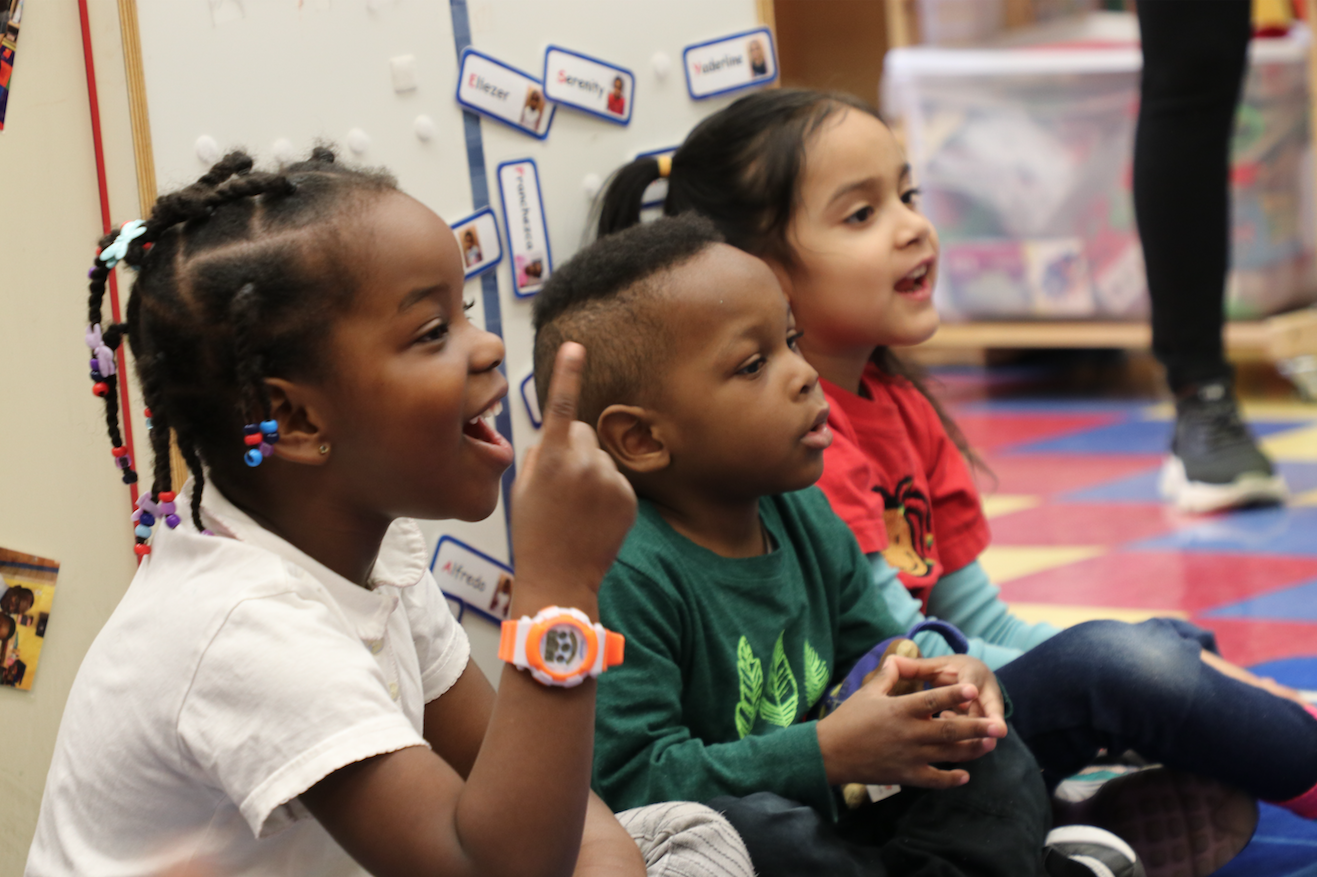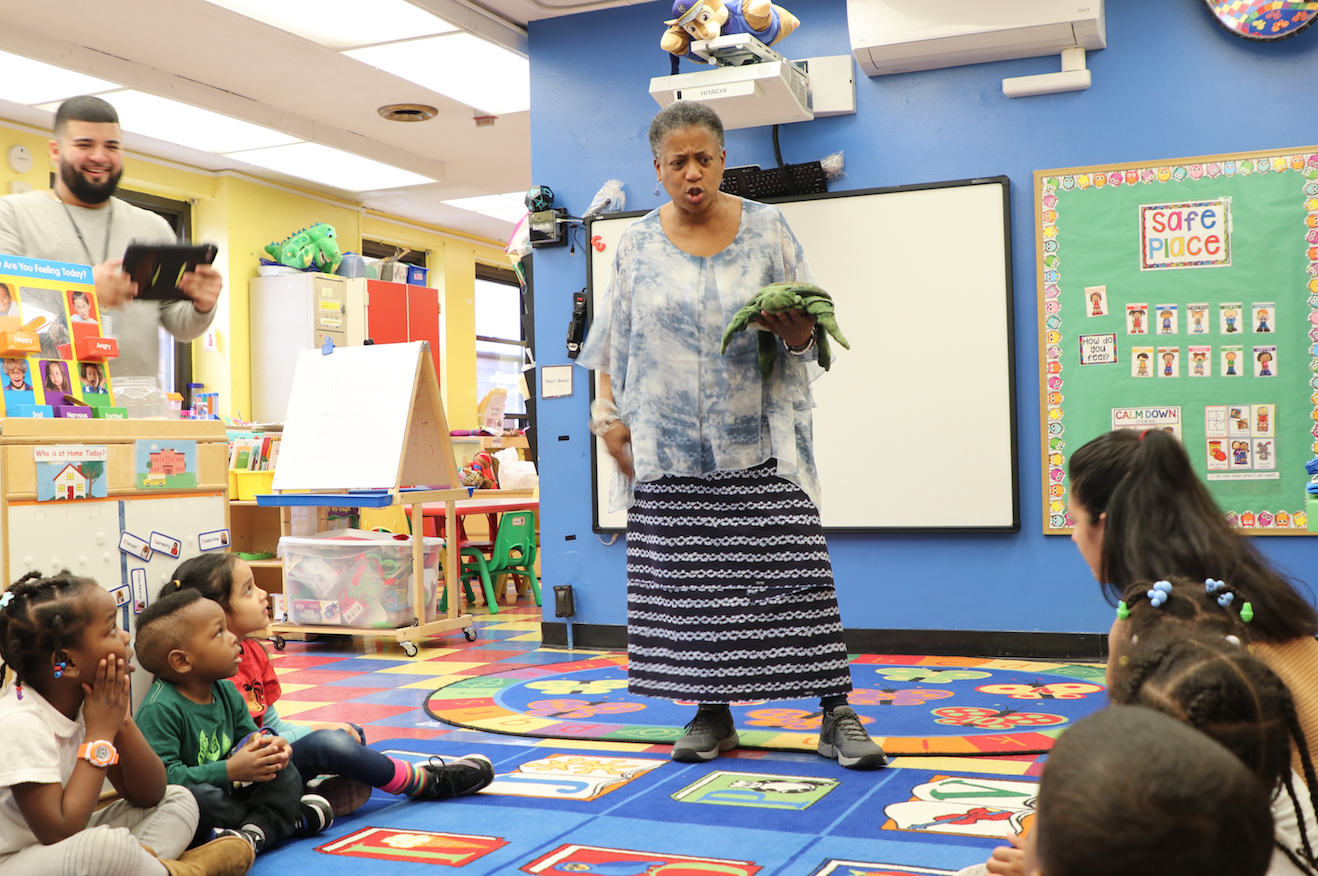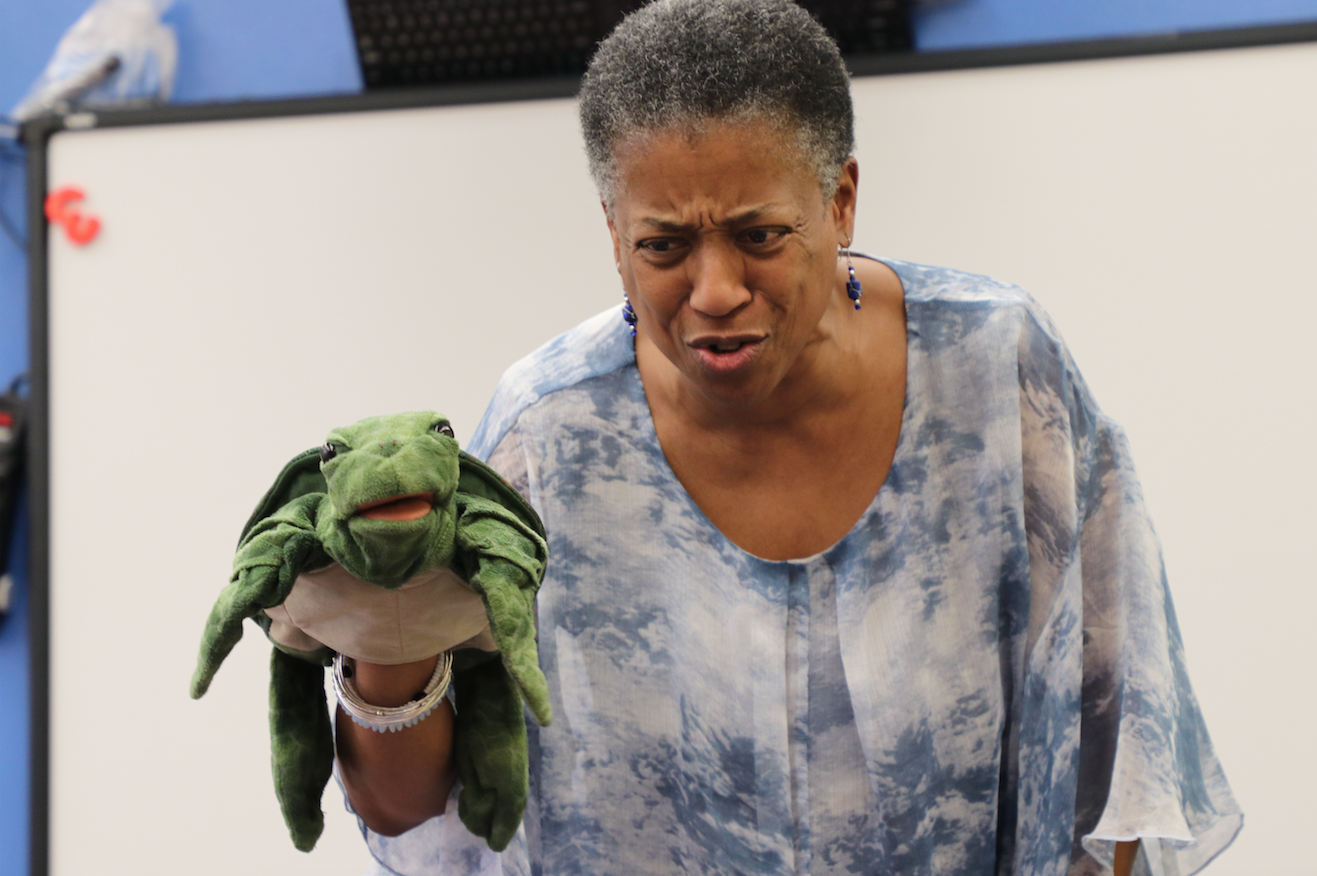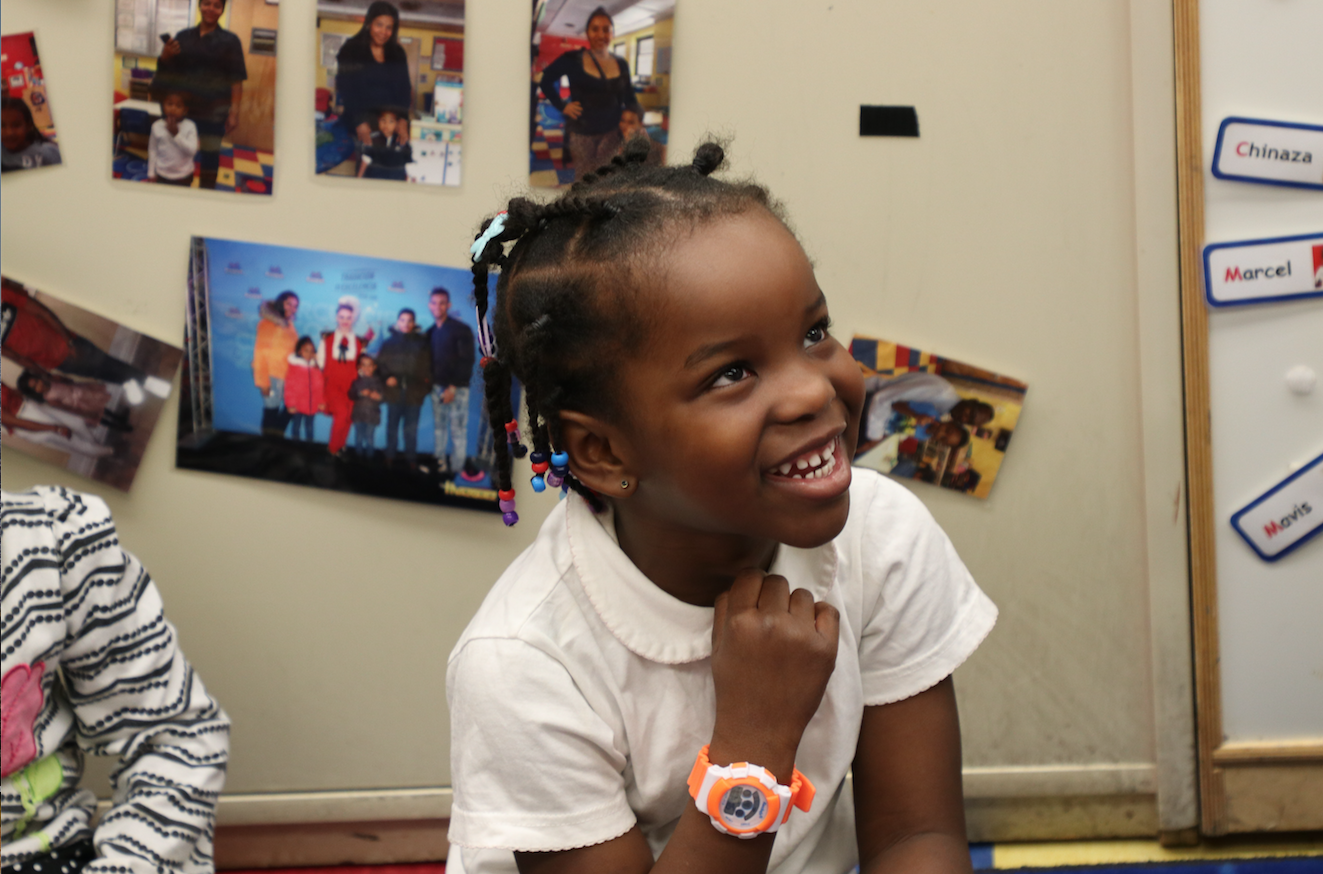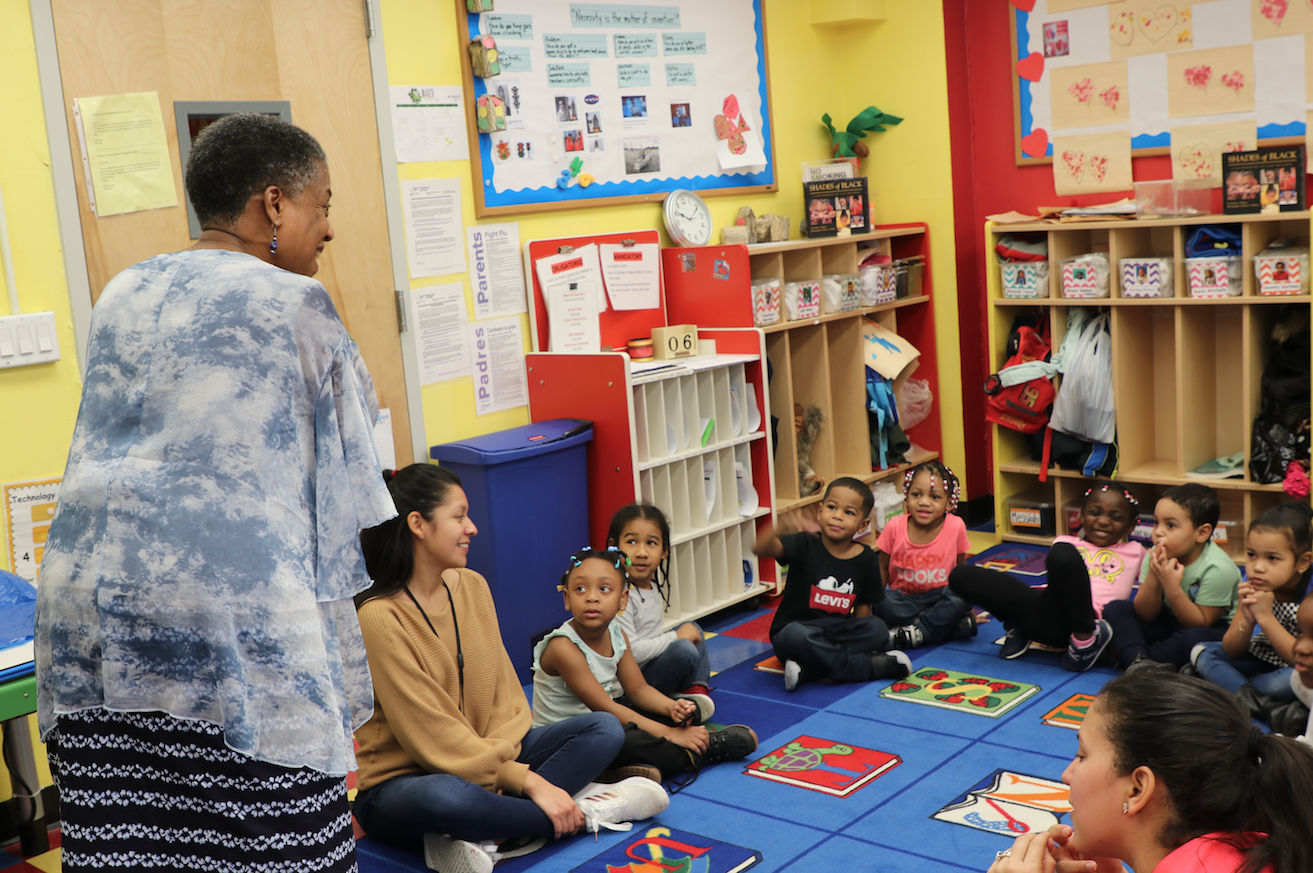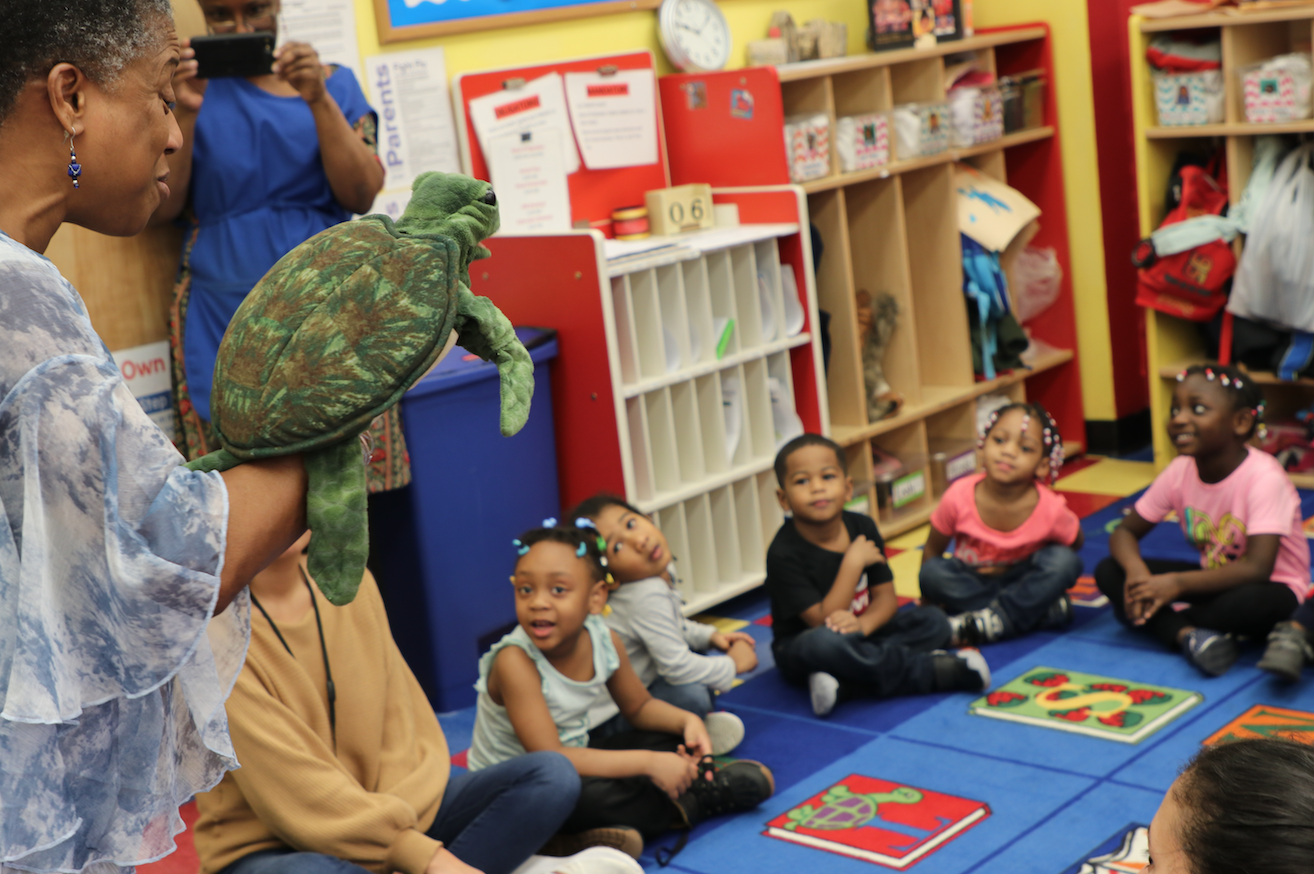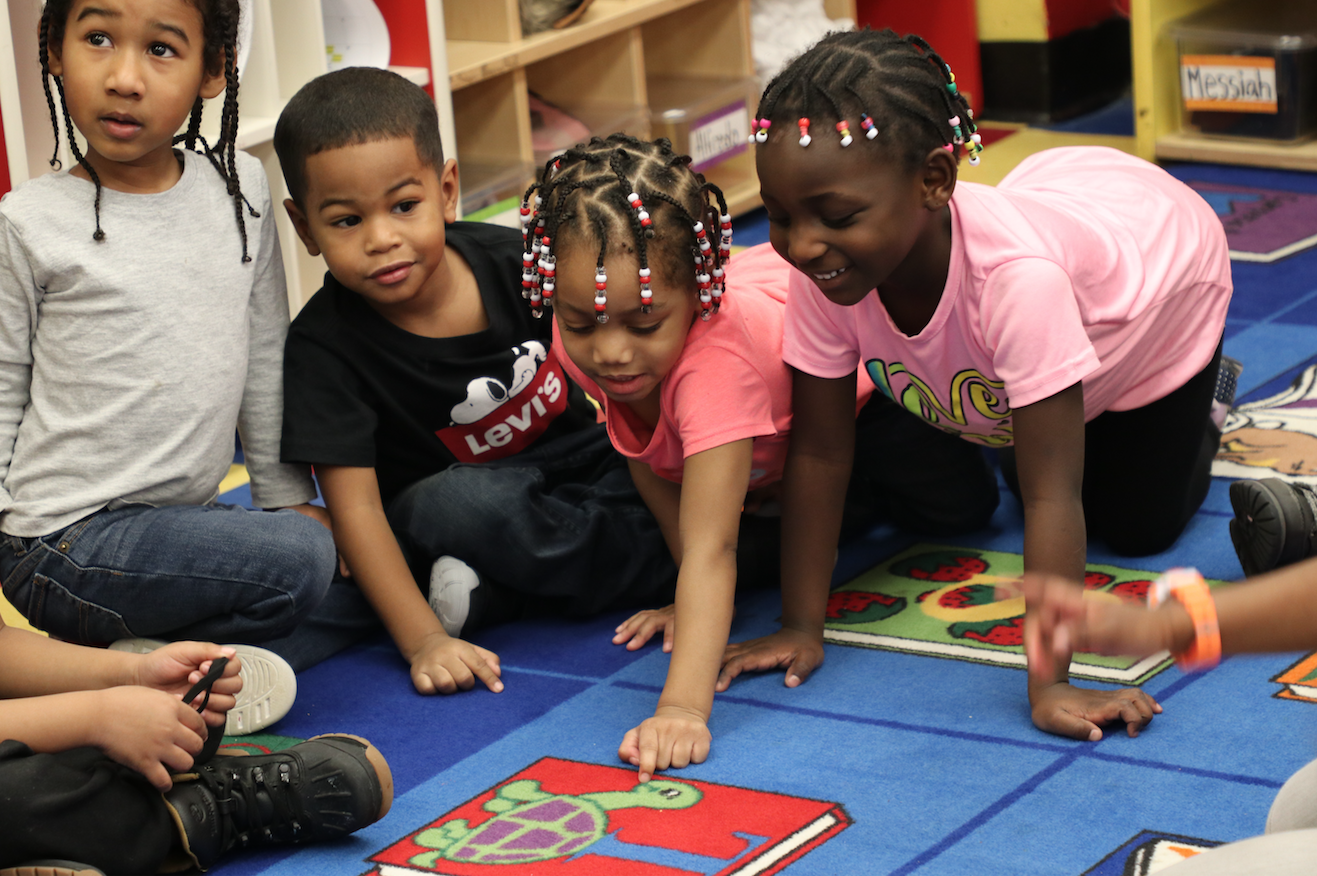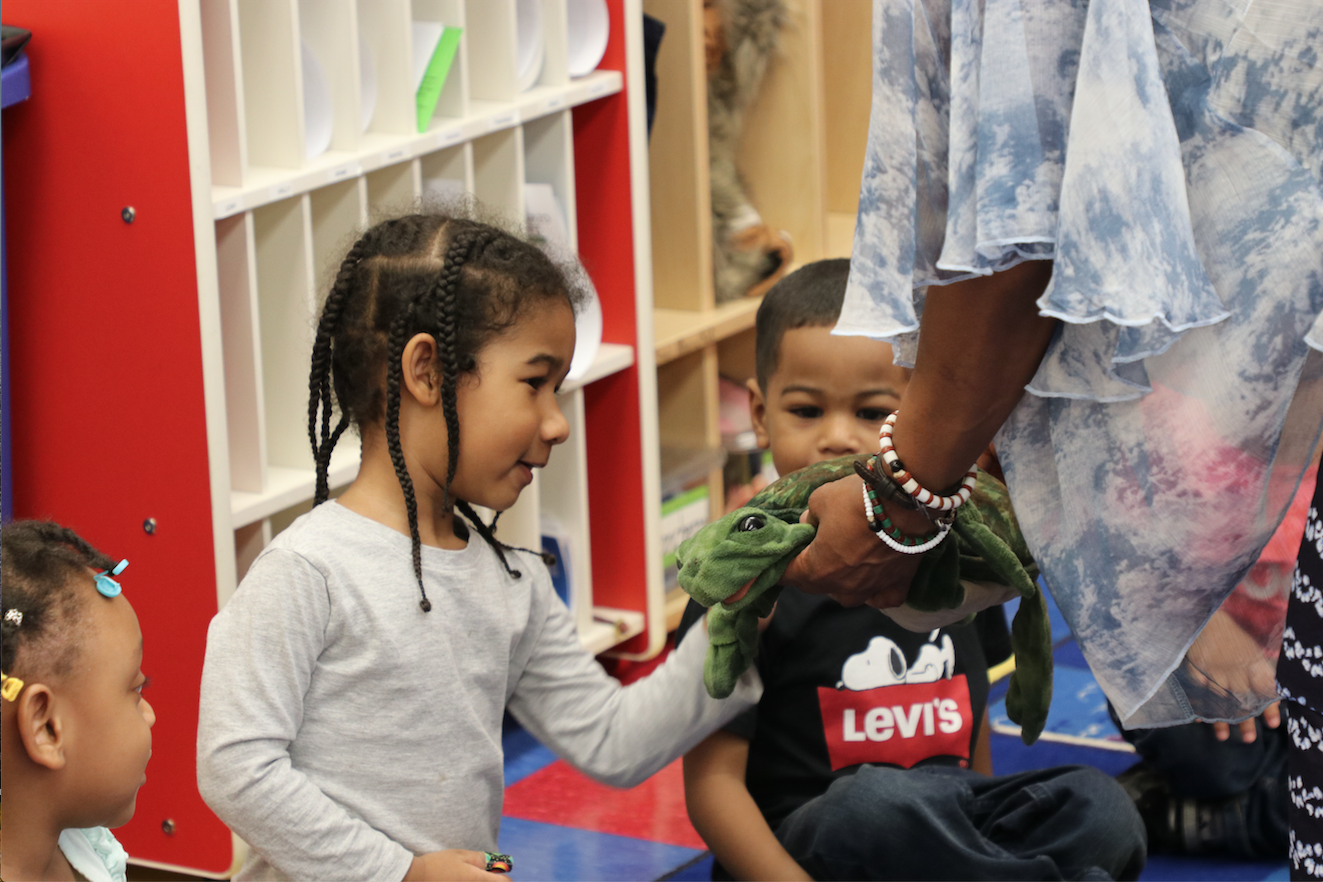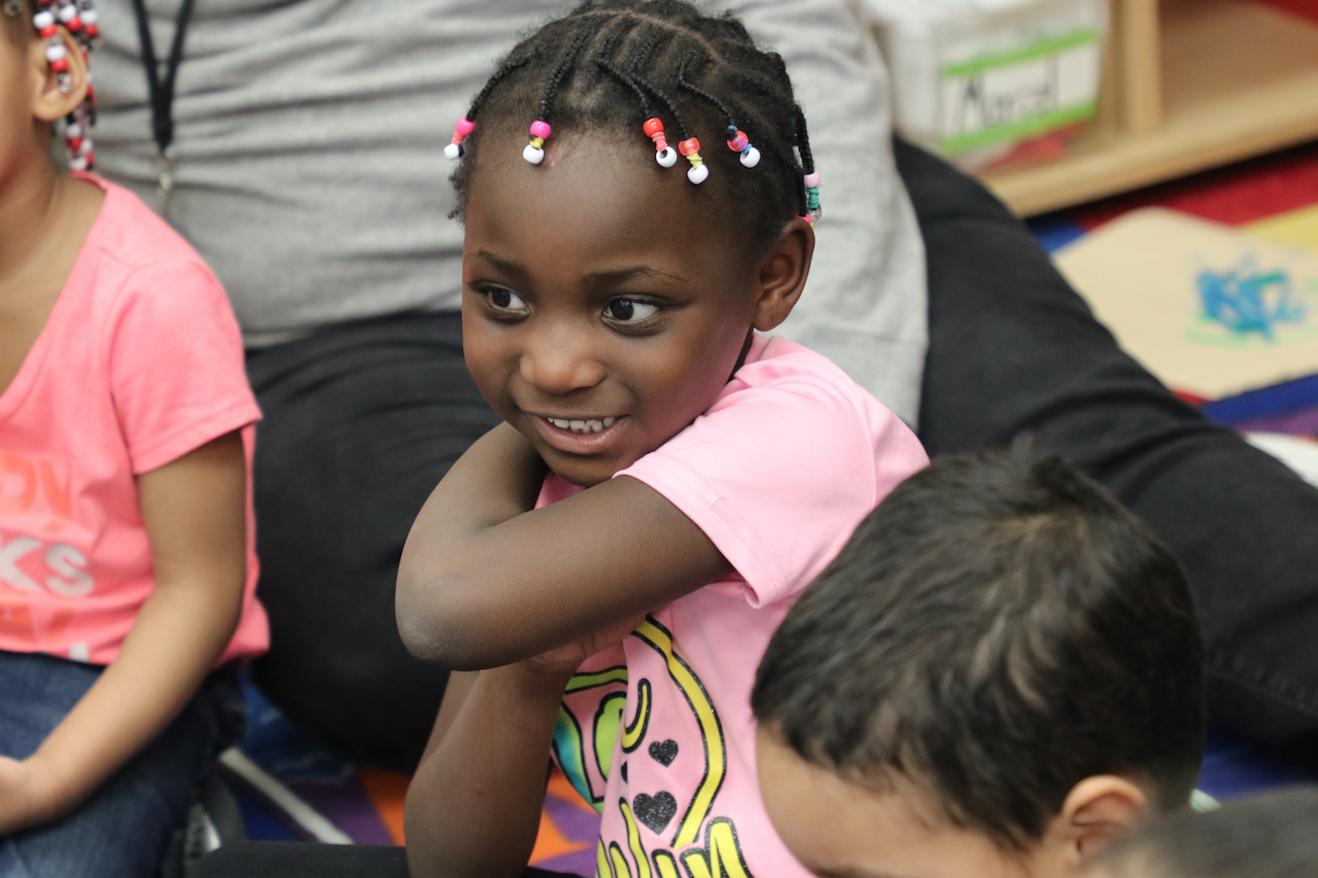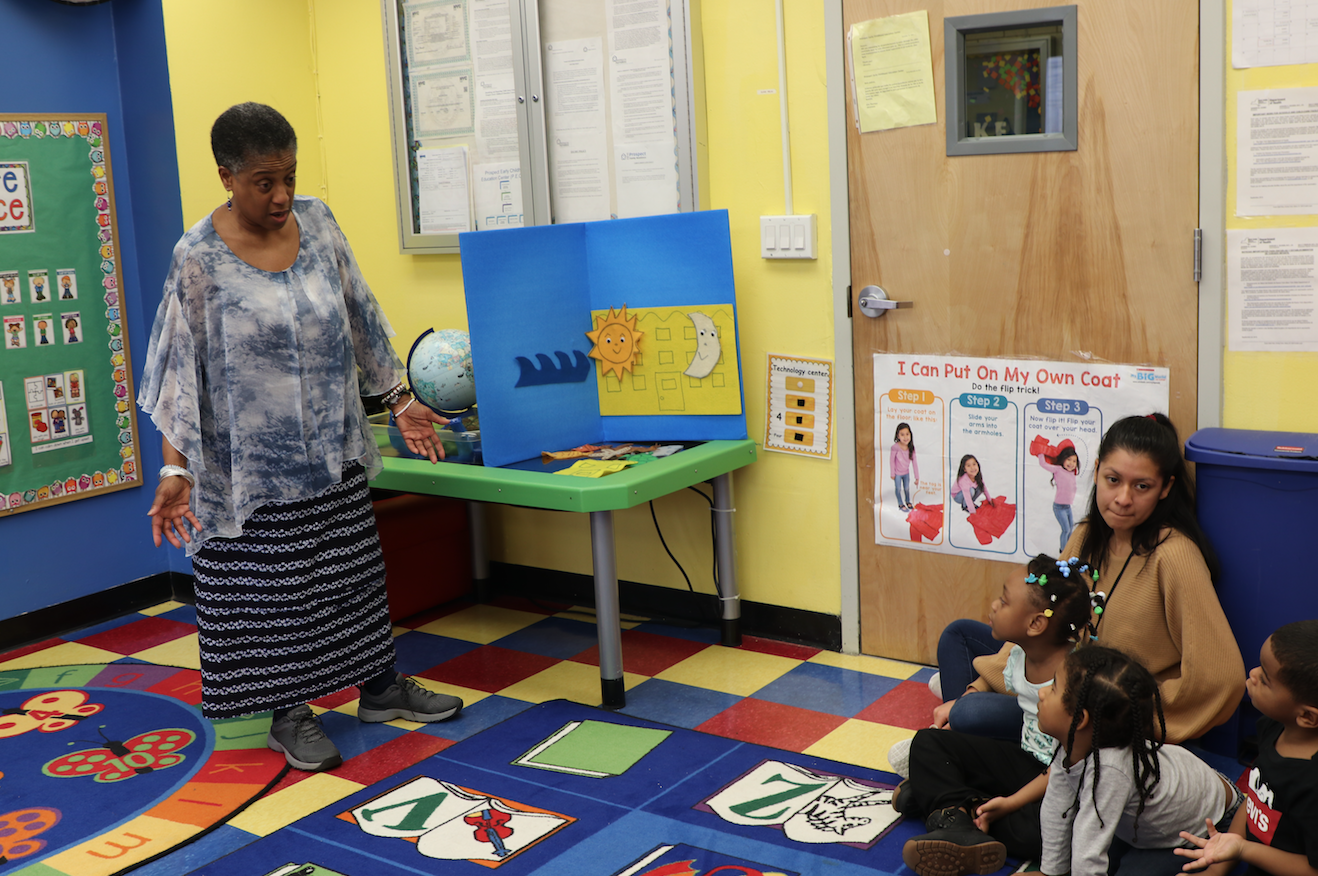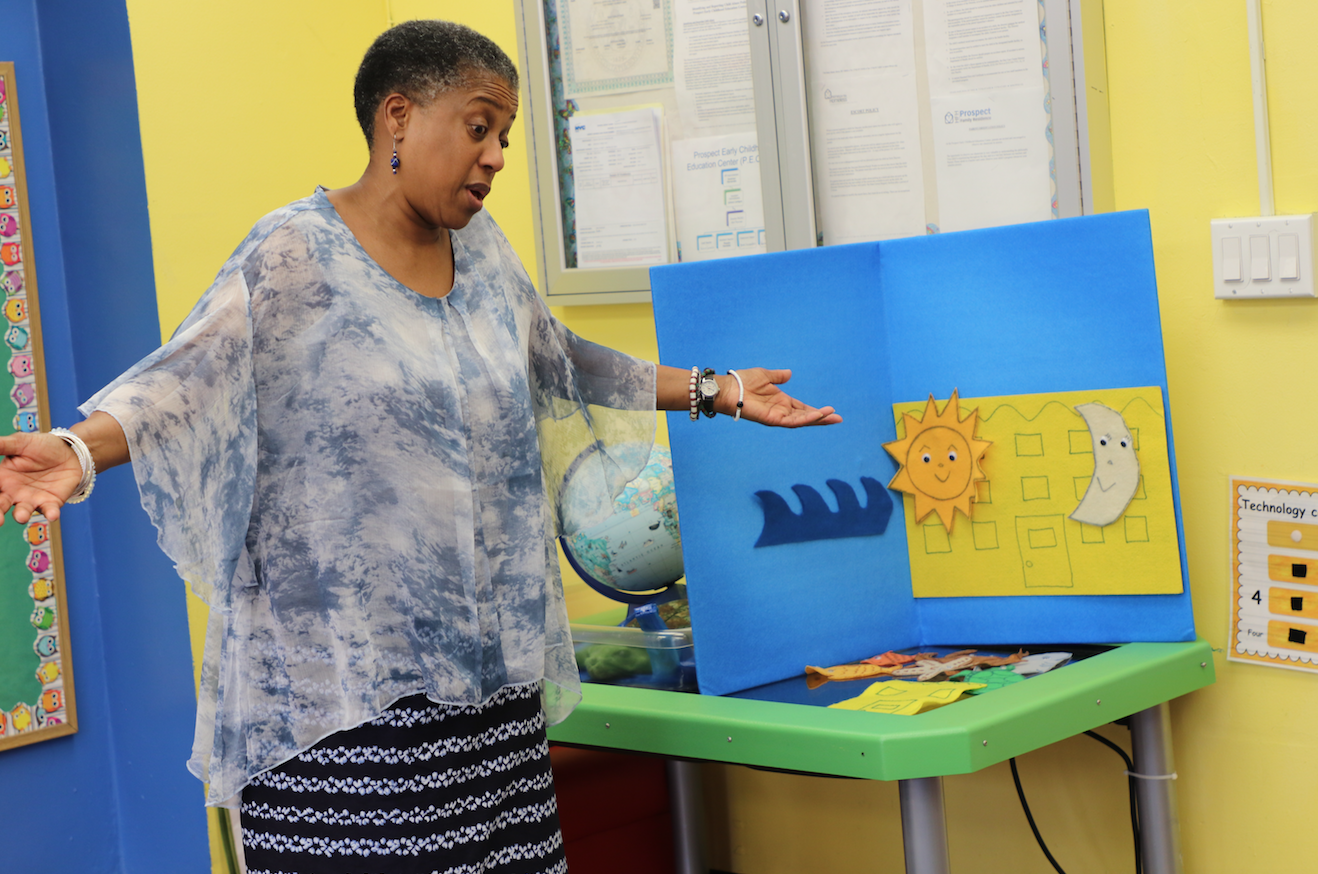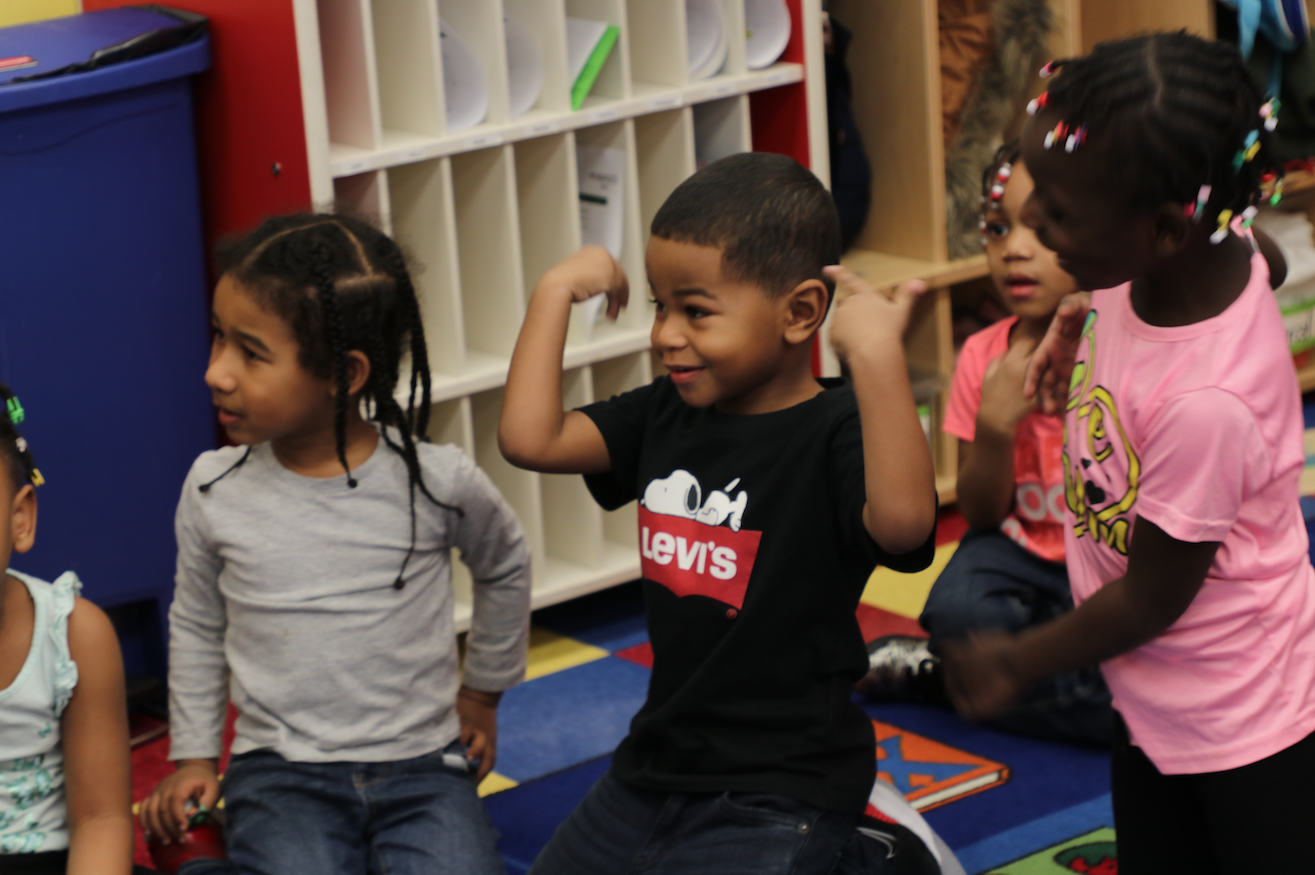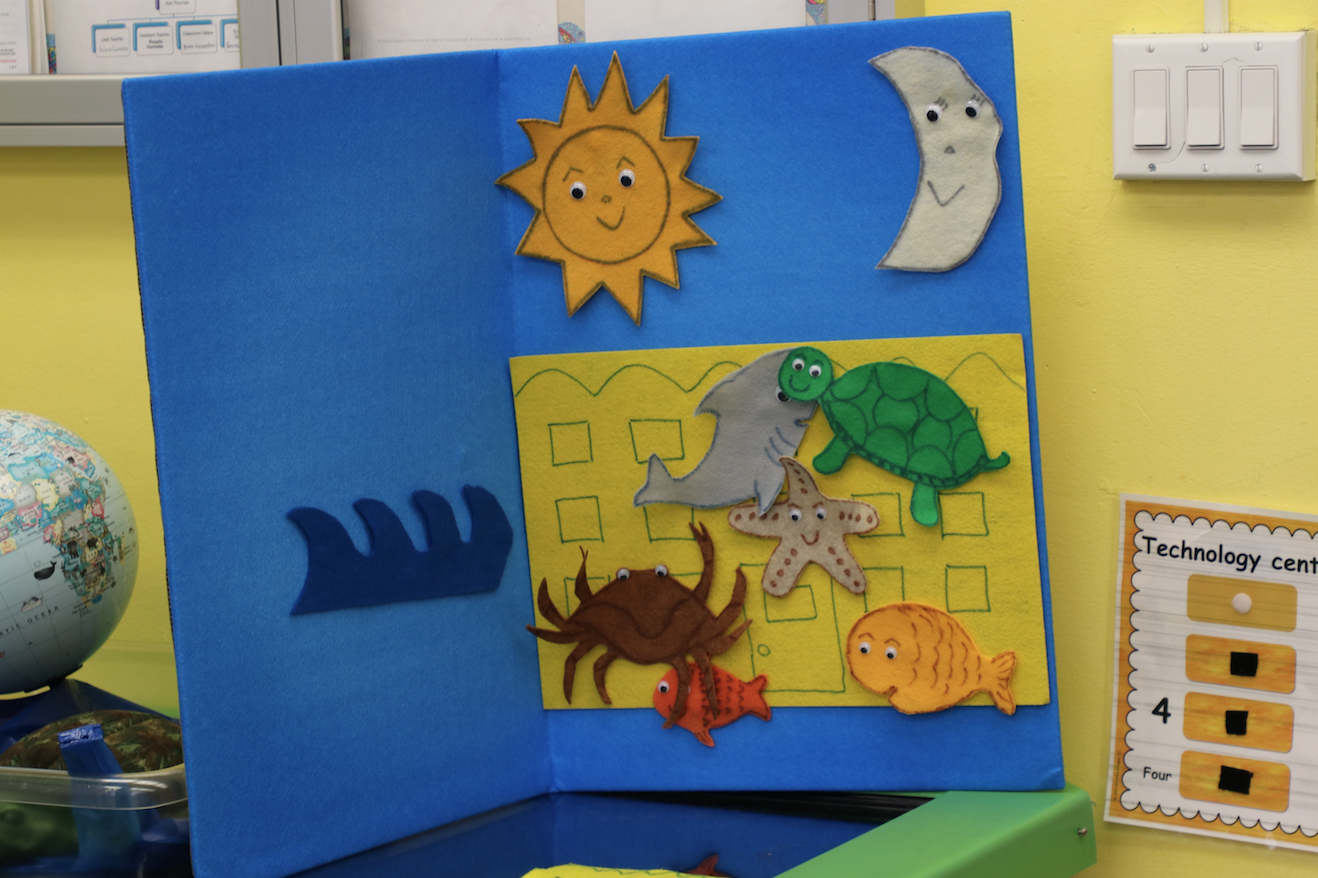Adadoma Bediako, an oral storyteller, visited Prospect Early Childhood Education Center for an interactive lesson on African folktales. The storytelling show formed a part of the children’s Black History Month celebrations, which also included lessons on black inventors like Garrett Morgan, inventor of the traffic light.
Bediako began the lesson with a folktale from Angola, which she pointed to on a globe. Bediako used a stuffed turtle as a stand-in for the story’s star, much to the delight of the children present. They eagerly pointed out a turtle on their classroom rug as Bediako asked the children about their knowledge of the animal.
Why the Sun and the Moon Live in the Sky
For Bediako’s second folktale, she directed the children’s attention to Nigeria. This story offered an explanation for why the sun and moon live in the sky. The story originated with the Efik, an ethnic group primarily located in southeastern Nigeria. To illustrate the story, Bediako made use of a felt board with felt characters and props.
The story begins with a friendship between the Sun and the Water, co-existing on Earth. When the Sun invites the Water to his home, the Water explains that the Sun’s house is not big enough to host him and his creatures. Undeterred, the Sun returns home to his wife, the Moon, and the two set to work expanding their home. Upon completion, the Sun beckons his friend, the Water, to visit.
“The Sun said, ‘Come in, my friend. Come in!'” narrated Bediako. She urged the children to echo the Sun’s sentiment. “Come in, my friend. Come in!”
Students Benefit from Interactive Storytelling
As the Water flowed into the Sun’s home, he brought with him a bevy of sea creatures — sharks, crabs, octopuses, starfish, and more. As Bediako piled the felt animals into the Sun and the Moon’s home, she and Kim Thurman, Director of Childcare, took the opportunity to offer the children a min-lesson in marine biology.
“What is this animal called?” she asked, holding up a relatively large dark blue toy.
“A whale!” one student volunteered.
“And this one?” she continued, this time with a small red toy.
“A lobster!” another student responded.
As the Sun welcomed more and more of Bediako’s animals into his home, the children quickly caught on to their role in the story.
“Come in, my friend,” they exclaimed. “Come in!”
As the Water flooded the home with his creatures, the Sun and the Moon were forced on their roof. Bediako perched them on the top of their felt house. Soon, Bediako noted, the roof too became submerged, and the Sun and the Moon were forced into the sky where they’ve remained ever since.
Celebrating a Rich Oral Storytelling Tradition
African and African American culture contain a rich and vast oral storytelling tradition. African folktales like those that Bediako shared are typically told through the oral tradition and tend to include interactive elements. This made Bediako’s folktales especially well-suited for Prospect’s young learners, who are always eager to participate and learn from new visitors.
Following the African folktales, Bediako explained to the children that she had just one more activity for them in their lesson — a song in Swahili. She introduced the song by explaining the origins of Swahili as a trade language. She then explained the song’s meaning.
“The song I’m going to teach you is a song for when you’re leaving. But it’s not a goodbye song, because the meaning of the song is until we meet again,” she said, noting that she might see the children again during another lesson or at the flea market or on the subway.
“Tutaonana, until we meet again,” she sang the students. “Will you sing that with me?”
“Tutaonana, until we meet again,” they chorused.

